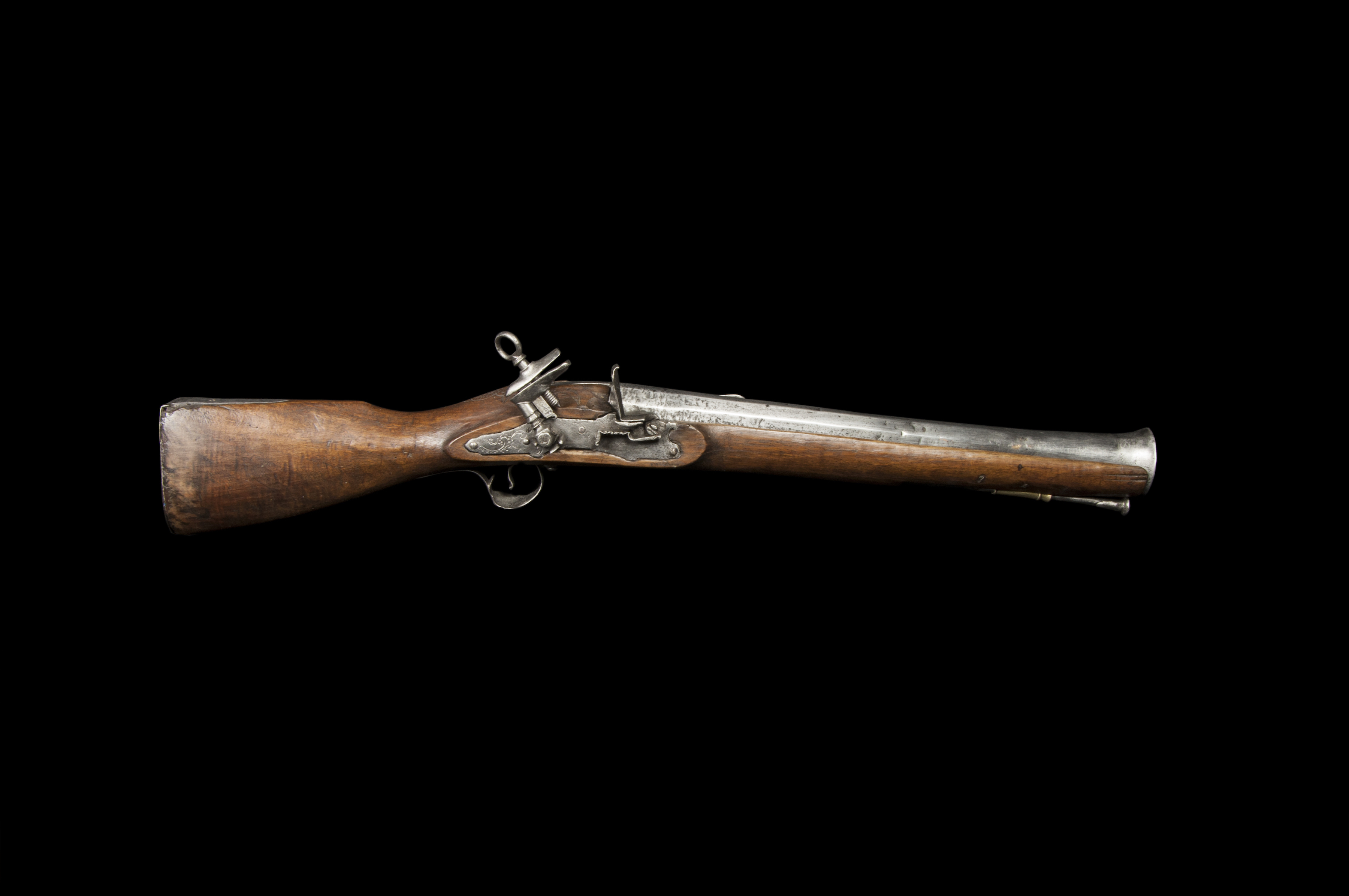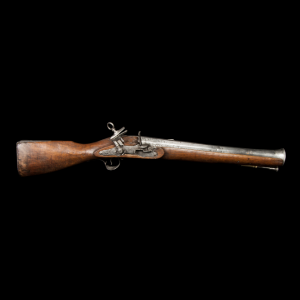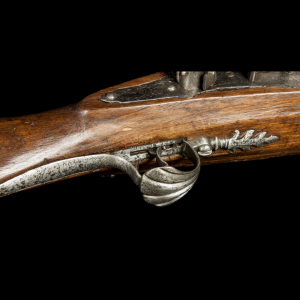Rifle
Author: Unknown
Origin: Unknown
Dating: 18th century
Material: Metal & Wood
Dimensions (cm): 16,5 x 9,3 x 78
Weight: 3843 g
Inv. no.: PD1060
A short flintlock rifle with a flared faceted barrel. It has pegs for a sling and a ramrod in metal.
This type of weapon gave way to a Portuguese expression still in use today: “Bater a Caçoleta”. In a free translation into English, “to hit the pan”, means, in Portuguese popular jargon, “to die”. The expression refers to the mechanical action of shooting a firearm, for the pan is the concave part of the flint gun mechanism where the gunpowder was placed.
With the evolution of Infantry, when soldiers were given the order to load the gun, they would remove a cartridge from a pouch, tear the casing with their teeth and pour some of the gunpowder into the chamber. The powder that remained was poured into the rifles’ barrel – along with a projectile – and then a ramrod pressed the load.
After pulling the trigger, the hammer moved in an arc and the flint stone – attached to the end of the hammer – scraped the frizzen, which produced sparks. These sparks would detonate the gunpowder in the pan and initiated the firing.






